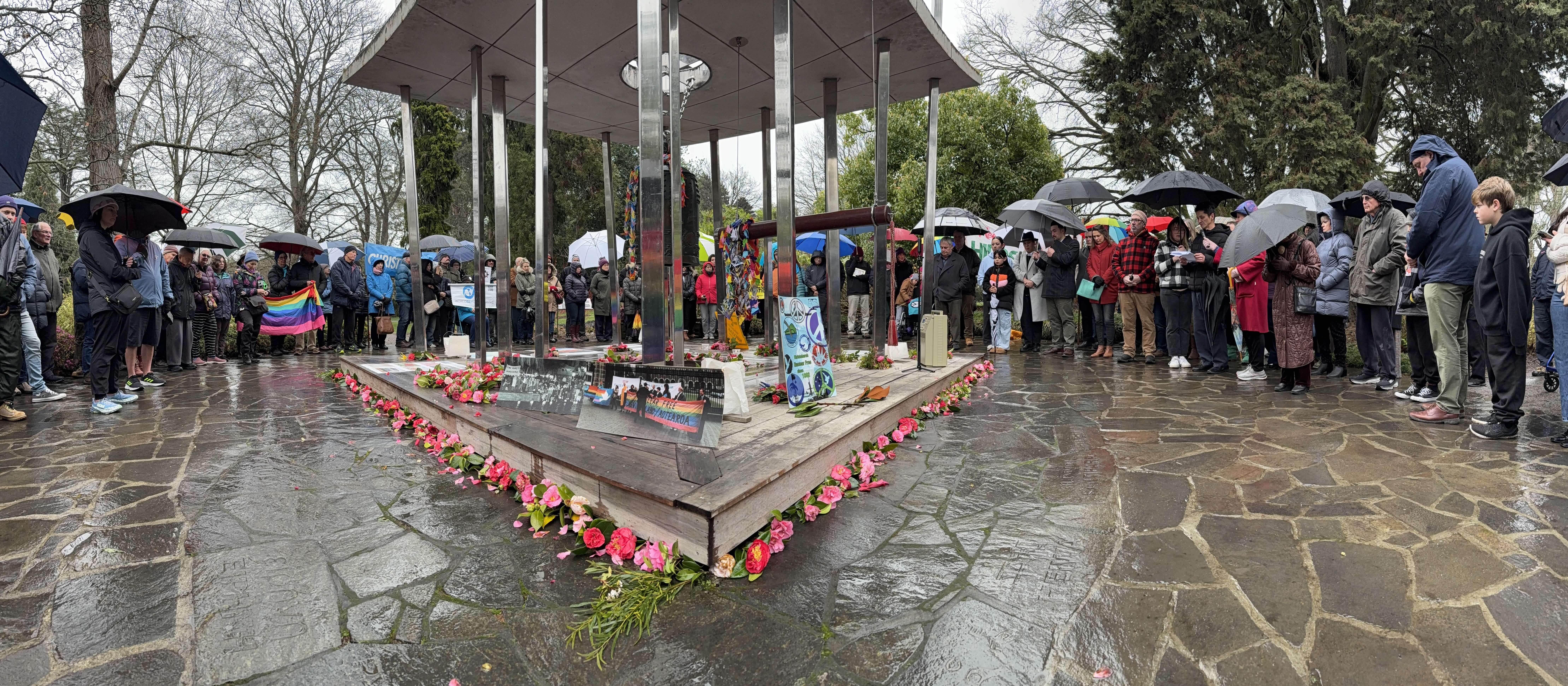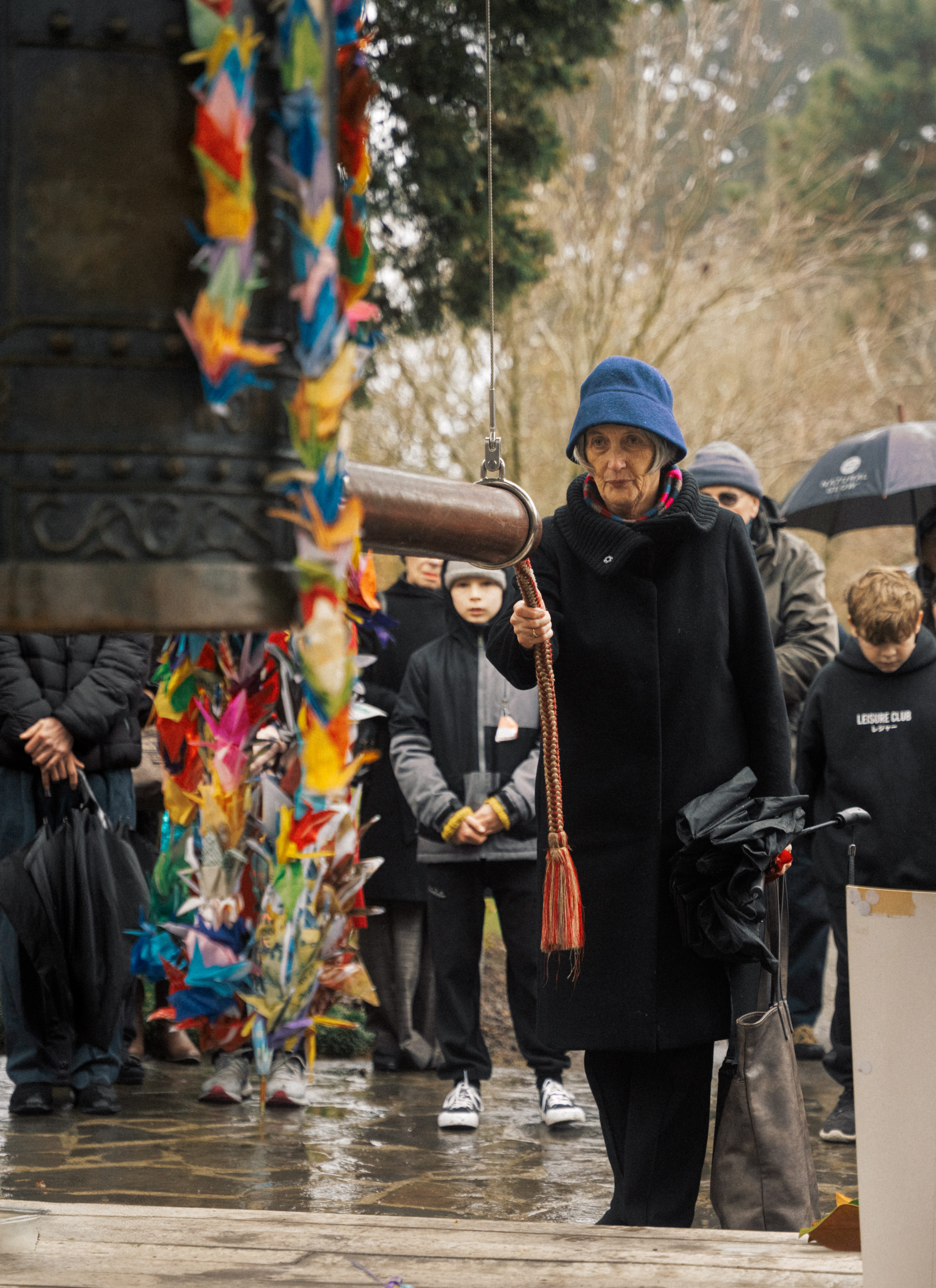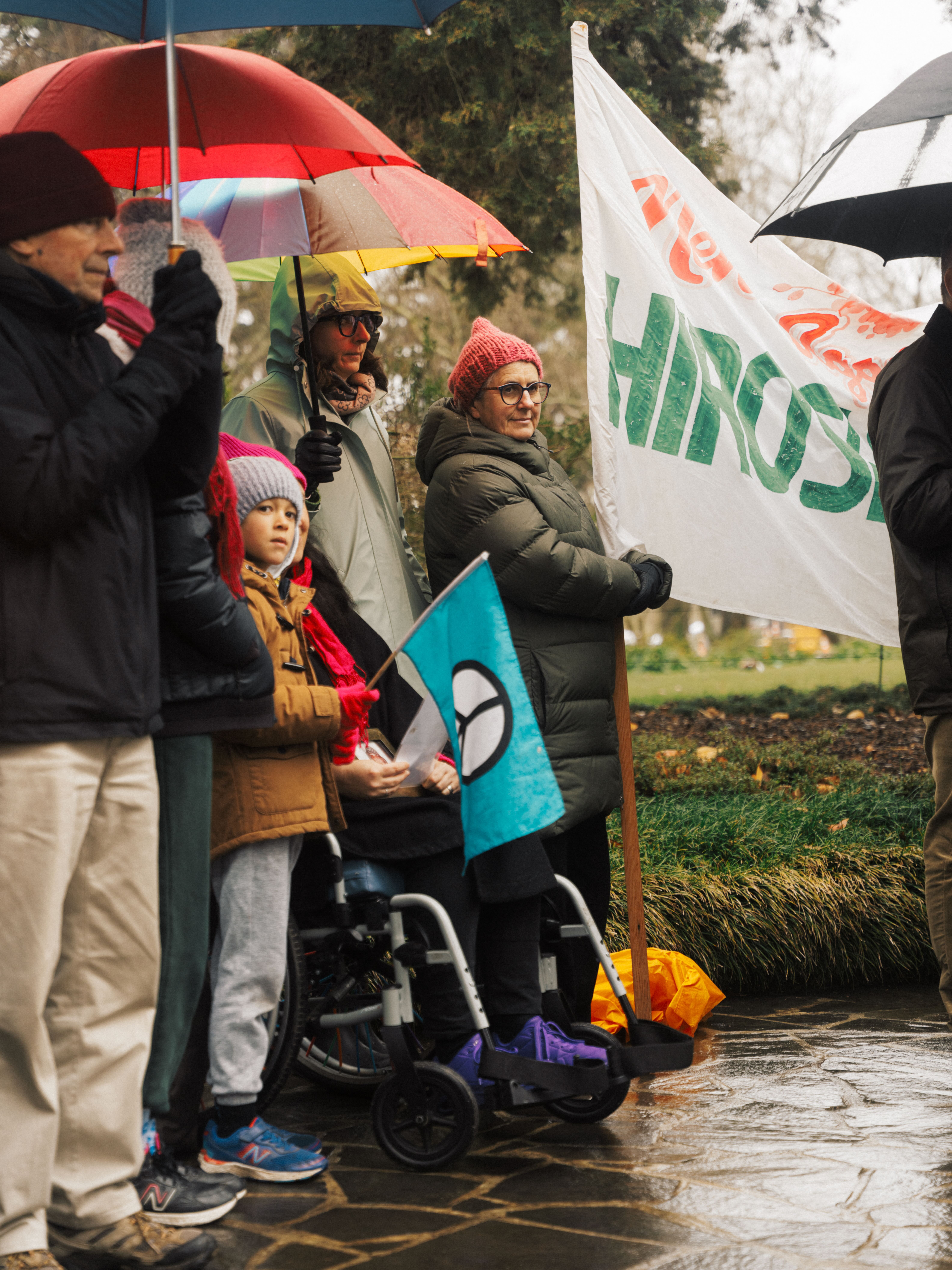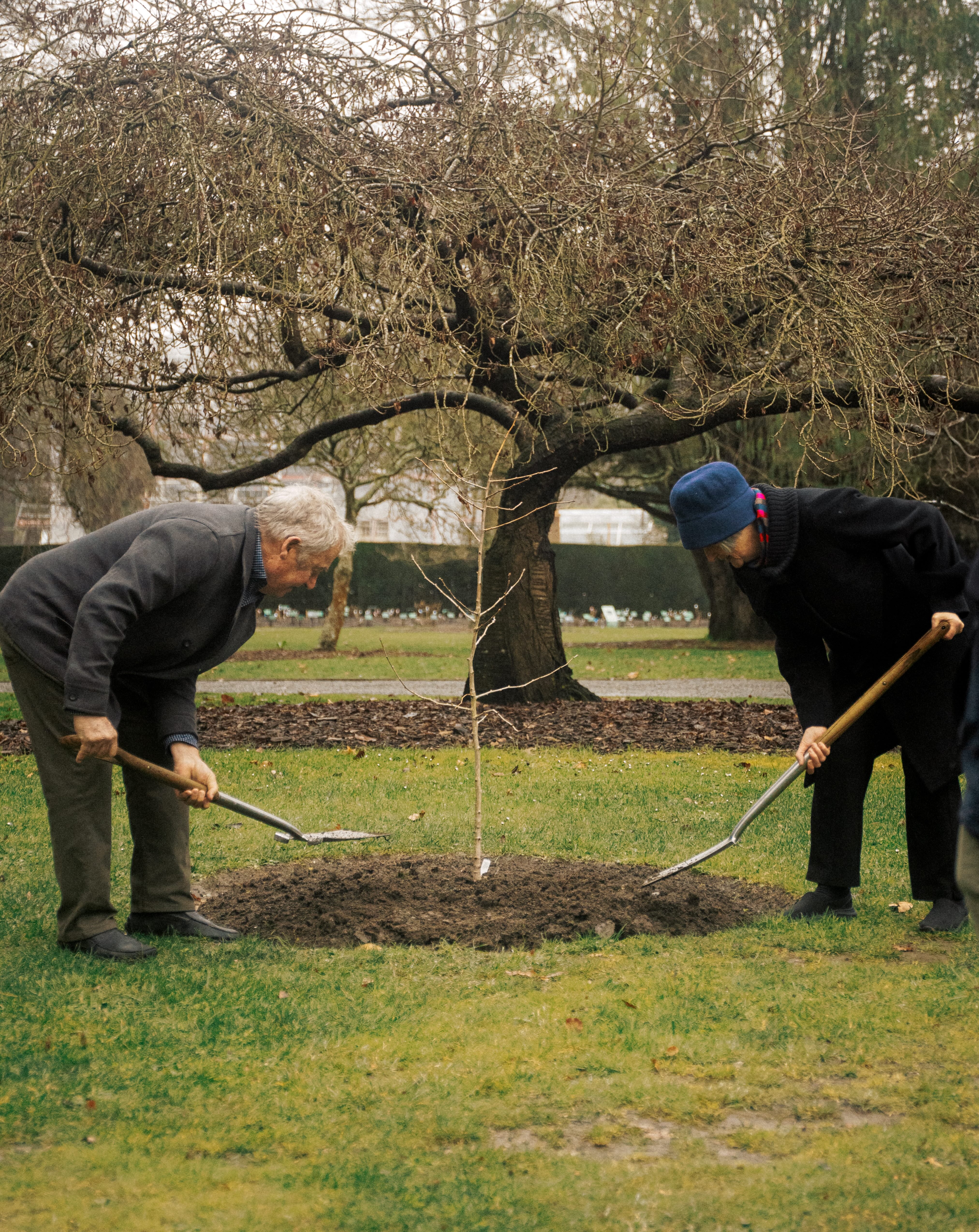
On Sunday, 10 August 2025, up to 200 people braved the cold and rain of midwinter to gather at New Zealand’s only World Peace Bell in Christchurch’s Botanic Gardens. The solemn ceremony marked the 80th anniversary of the atomic bombings of Hiroshima and Nagasaki.
Led by Lucy Stewart, Programme Manager at the Disarmament and Security Centre, the event began with a karakia offered by Tyla Harrison-Hunt, Christchurch City Councillor for Riccarton. He was joined by members of the family of the late Reverend Maurice Manawaroa Gray, who performed a waiata. Dr Melanie Coker of the Christchurch City Council spoke about the significance of the anniversary, after which Mayor Phil Mauger rang the World Peace Bell to lead a minute’s silence. This was followed by a moving a cappella performance by Lucy Hiku of I Come and Stand, a lament from the perspective of a seven-year-old girl who perished in Hiroshima, calling for peace.
The Japanese Consul in Christchurch addressed the gathering, paying tribute to the hibakusha—the survivors of the atomic bombings—who have courageously advocated for nuclear abolition for eight decades. Dr Susan Bouterey of the University of Canterbury read an excerpt from the memoirs of Hiroshima survivor Bun Hashizume, while Steve Coll, a descendant of a J-Force soldier, shared recollections from servicemen and women who were among the first New Zealanders to witness the devastation in Hiroshima and Nagasaki after the war.
The Cherish Threshold and Reflections Threshold singers offered two beautiful pieces, adding to the reflective atmosphere. A special moment came when Christchurch Mayor Phil Mauger and Dr Kate Dewes planted a ginkgo sapling near the bell site. The tree was grown from seed collected from a parent tree that survived the Hiroshima bombing, just 1.3 kilometres from the hypocentre. With the blessing of Green Legacy Hiroshima, nurtured at Dunedin Botanic Garden Nursery for over seven years, these seeds were brought to New Zealand by Lee Vallance and Douglas (Mick) Field, who completed his apprenticeship at Christchurch Botanic Gardens. Olivia Shimasaki read the words of the late Elsie Locke, the prominent Christchurch peace campaigner, which speak of the Avon River sharing the same waters that flow through to the Pacific Ocean, connecting the city to Hiroshima and Nagasaki. Despite the winter chill and the solemn purpose of the gathering, the scene was brightened by pink and white camellia flowers picked by locals from the Red Zone, origami cranes, candles and lanterns. People from all walks of life and political parties stood side by side in remembrance, including local MPs Hamish Campbell, Duncan Webb and Dr Vanessa Weenink. The ceremony concluded with a final karakia and waiata, bringing the gathering to a close in a spirit of reflection and unity.
The event was a powerful continuation of Christchurch’s long-standing tradition of commemorating the atomic bombings. As New Zealand’s first nuclear-free city (declared in 1982) and the nation’s first Peace City (proclaimed in 2002), Christchurch has a proud legacy of promoting peace and nuclear disarmament. This year’s commemoration served as both a remembrance of the victims and a renewed commitment to share the testimonies of the hibakusha, ensuring their lessons endure for future generations.




